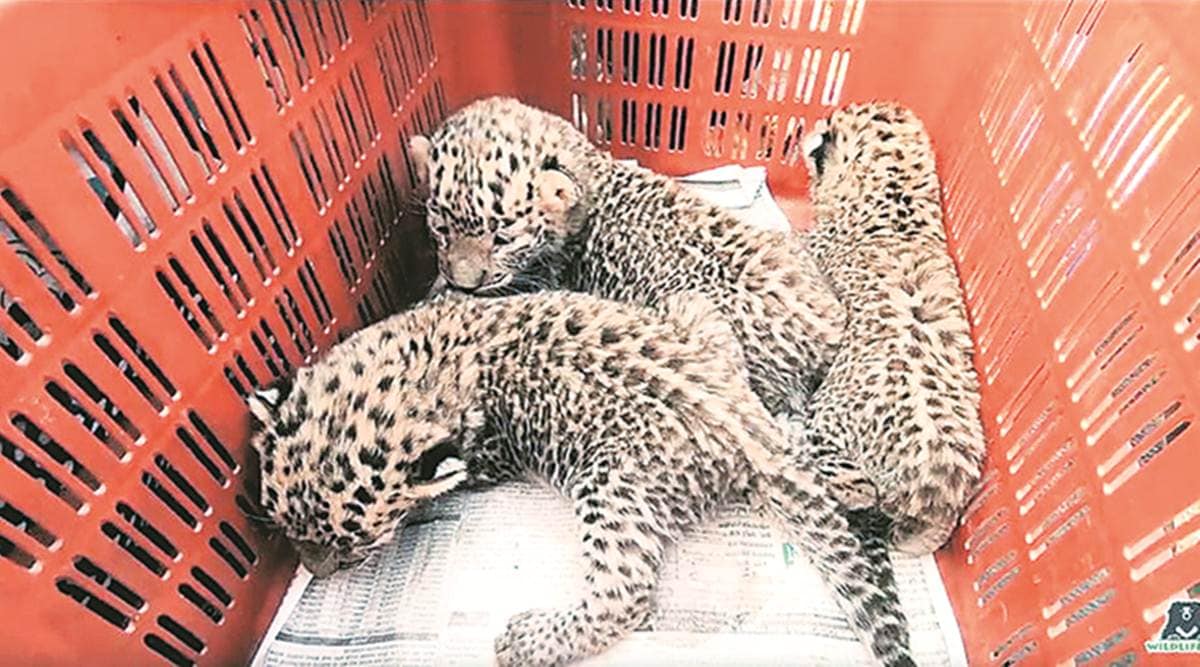 The leopard's left forelimb was caught in the trap, and that it was trying to break free, they added.
The leopard's left forelimb was caught in the trap, and that it was trying to break free, they added. A THREE-YEAR-OLD female leopard was caught in a jaw trap at Kuruli village, located in Shirur division of Pune, but timely intervention by the forest department and an NGO helped save the animal’s life. The leopard is under medical care at a transit facility, said officials.
Jaw traps are lethal hunting devices that can cause severe lacerations, joint dislocations, fractures and even death.
According to the authorities, earlier this week, Wildlife SOS, an NGO based out of the Leopard Rescue Centre in Junnar, received a call from the state forest department about a leopard caught in a jaw trap at a sugarcane field.
Officials said a four-member team from the NGO geared up with safety nets, tranquilising equipment and protective gear to assist the forest department in the rescue operation. The leopard’s left forelimb was caught in the trap, and that it was trying to break free, they added.
The team had to act quickly in such a situation, and it set up safety nets around the field, said Dr Nikhil Bangar, Wildlife SOS veterinary officer. The big cat was immobilised using a sedative injection from a safe distance, and the jaw trap was carefully removed from the entrapped paw while topical treatment was administered to the animal on-site for external injuries, added Dr Bangar.
He also said as the extent of the internal injuries was undetermined, the animal was immediately transferred to the rescue centre for a thorough examination. The leopard was in pain and any further delay would have caused severe damage to the forelimb, he added.
Kartick Satyanarayan, co-founder and CEO of Wildlife SOS, said, “Timely intervention has helped save the animal’s life. The threat of jaw traps and snares is very real. Despite being illegal and banned, they continue to be used for trapping or killing wild animals.
Manohar Ramdev Mhasekar, forest range officer, Shirur, said, “Farmers often set up such traps around agricultural fields to prevent animals such as wild boars from raiding their crops. Unfortunately, larger animals such as leopards and hyenas also end up getting caught in these deadly traps. There is an urgent need to educate the public about their illegality.”
The Indian leopard, listed as “vulnerable” under IUCN Red List of Threatened Species, has an estimated figure of 12,000 to 14,000 remaining in the country. Experts said it such situations, hence, were critical and even a single call for help was imperative for their survival.